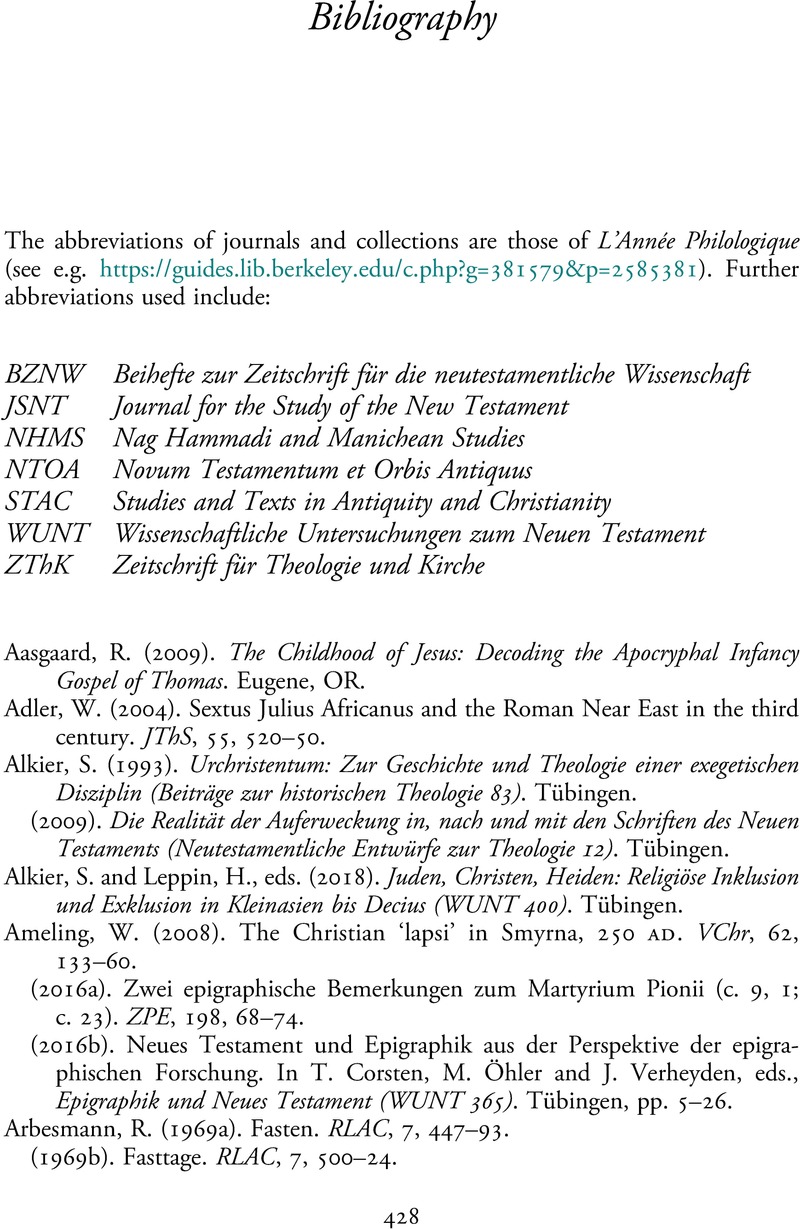Published online by Cambridge University Press: 05 October 2023

The abbreviations of journals and collections are those of L’Année Philologique (see e.g. https://guides.lib.berkeley.edu/c.php?g=381579&p=2585381). Further abbreviations used include:
Beihefte zur Zeitschrift für die neutestamentliche Wissenschaft
Journal for the Study of the New Testament
Nag Hammadi and Manichean Studies
Novum Testamentum et Orbis Antiquus
Studies and Texts in Antiquity and Christianity
Wissenschaftliche Untersuchungen zum Neuen Testament
Zeitschrift für Theologie und Kirche
Beihefte zur Zeitschrift für die neutestamentliche Wissenschaft
Journal for the Study of the New Testament
Nag Hammadi and Manichean Studies
Novum Testamentum et Orbis Antiquus
Studies and Texts in Antiquity and Christianity
Wissenschaftliche Untersuchungen zum Neuen Testament
Zeitschrift für Theologie und Kirche
To save this book to your Kindle, first ensure [email protected] is added to your Approved Personal Document E-mail List under your Personal Document Settings on the Manage Your Content and Devices page of your Amazon account. Then enter the ‘name’ part of your Kindle email address below. Find out more about saving to your Kindle.
Note you can select to save to either the @free.kindle.com or @kindle.com variations. ‘@free.kindle.com’ emails are free but can only be saved to your device when it is connected to wi-fi. ‘@kindle.com’ emails can be delivered even when you are not connected to wi-fi, but note that service fees apply.
Find out more about the Kindle Personal Document Service.
To save content items to your account, please confirm that you agree to abide by our usage policies. If this is the first time you use this feature, you will be asked to authorise Cambridge Core to connect with your account. Find out more about saving content to Dropbox.
To save content items to your account, please confirm that you agree to abide by our usage policies. If this is the first time you use this feature, you will be asked to authorise Cambridge Core to connect with your account. Find out more about saving content to Google Drive.